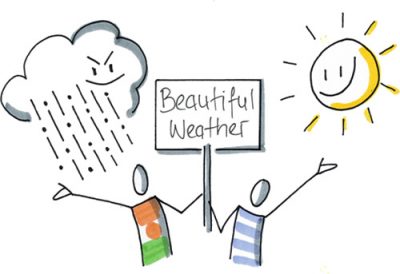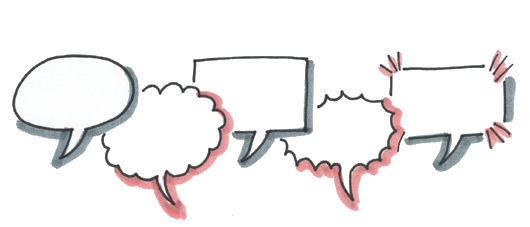Intercultural Communication
Intercultural communication aims at sharing information across different cultures and social groups. Communication styles vary largely across cultures, and communication norms are expressions of each culture’s values. The essence of cross-cultural communication has more to do with attracting responses than sending messages. The fundamental question is “am I triggering the response I want?”
Getting the meaning, not just the words

I was living for the first time in Africa (Niger) in a small village within the Sahel. I enjoyed sleeping under the open sky and waking up with the sun every morning. “What beautiful weather we have today,” I used to say, looking at the large, immaculate blue sky. My Nigerien colleagues never responded nor reacted to my “daily weather report.” Nine months after my arrival, the rainy season started, and all my colleagues became absolutely ecstatic. “Have you seen what beautiful weather we have today?” they told me every morning. Without a doubt, the meaning of words depends on the context in which they are used (to be continued…).
“Reading the air”
As the rainy season started in Niger, I was delighted to see how the dry and arid Sahel transformed into a lush green scenery almost overnight. I particularly loved the fact that my little mud and thatch house was suddenly surrounded by grass. It was as if suddenly I had a garden. The villagers who used to visit me regularly seemed less enthusiastic about my green space. “Ariane, you should cut the grass,” some told me. “Oh, it gives a touch of color and it reminds me of Switzerland. I now understand why you love the rainy season that much” I replied. And I didn’t cut anything.
But one evening I came back to my hut. And what did I see…?
Rushing through the village, and telling the villagers about my encounter with this snake, they simply looked at me and said, “Well, we told you to cut the grass.”
Different ways of “packaging the message
What is considered “good communication” differs from one culture to another. I grew up in a culture where messages are generally understood at face value. Precise, simple, explicit, and clear communication is usually valued. What is said, not how it is said, is key. Would the villagers in Niger have told me, “Ariane, grass attracts snakes. Cut the grass and you won’t have any snakes,” I would have been the first person to cut the grass. In hindsight, of course, I should have asked them why I should cut the grass. Believe me, I would today.

In Niger, messages tend to be implied and not plainly stated. Understanding may depend on reading between the lines, or “reading the air” to look for cues for what isn’t said. How things are said, not what is said, is key. It’s very likely that most Africans know that grass attracts snake and, therefore, do not need it to be stated explicitly. Coming from Switzerland, I may expect bees or dog poo in grass, but definitely not snakes!
“Communication is culture – culture is communication.”
– Edward T. Hall
Lost in translation
The only way to bridge intercultural differences is through communication, which, paradoxically, is the source of most misunderstandings between people of different backgrounds.
- Misunderstanding in meaning of words: An American director was put off by the response of a European colleague (non-native English speaker) stating that he was “hardly” working on a project, while he meant to say that he was working hard on it.
- Misunderstandings in use of civilities: Is Mrs. Curdy, Madam, Dear Ariane, Hi Ariane, Ariane:…, or simply Hi the appropriate form of address in professional emails?
- Misunderstanding in the way we convey messages: “Klartext” – plaintext/straight talk, or reading between the lines; saying “no” clearly, or hoping that “maybe, perhaps, I’ll try” is understood as such?
→ Edward T. Hall, the founding father of intercultural communication as an area of study, always insisted that reflecting on different communication styles was the most fundamental and important aspect to consider in an international/intercultural environment in order to trigger the response we expect (be it with colleagues or customers).
* Edward T. Hall, Jr. (1914 – 2009), American anthropologist and cross-cultural researcher



